When malignant cancer cells form in the tissues of the cervix, it is called cervical cancer. The cervix is located at the narrow end of the uterus and leads to the vagina.
The development of cervical cancer is a slow process; the cells go through several changes before becoming cancer. The changes are called dysplasia. During this period, abnormal cells begin to appear. Over time these cells will grow into cancer cells and spread throughout the cervix and surrounding areas. Stage 3 cervical cancer begins when the cancerous cells begin to spread away from the cervix. Below you will discover how cervical cancer is diagnosed and the treatments used to relieve the symptoms in hopes that the cancer will be cured.
Stages of Cervical Cancer
There are four stages of cervical cancer. The staging is what helps your doctor determine how far the cancer has spread and which treatments will possibly work the best. Stage 3 cervical cancer spread into the pelvic area and lower part of the vagina. Learn more about the staging here:
1. Stage 1
Stage one cervical cancers is generally divided into Stage 1A and Stage 1B as they are both in the neck of the womb, yet one is slightly larger than the other. Each of these stages are further divided into 2 sub stages as well.
Stage 1A
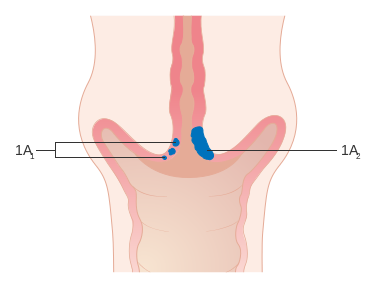
- Stage 1A1 cancer is less than 3mm into the tissue and less than 7mm wide.
- Stage 1A2 is now 3-5 mm into the cervix tissue; however it is still less than 7mm wide.
Stage 1B
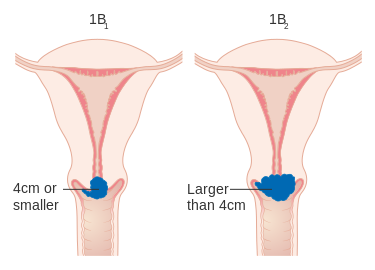
Stage 1B is still located only in the cervix tissue and has not spread away and it can be seen without a microscope.
- Stage 1B1 means that the cancer is less than 4cm.
- Stage 1B2 means that it has grown larger than 4cm in diameter.
2. Stage 2
Once the cancer begins to spread outside of the womb, but not into the muscles and ligaments, it is called stage 2 cervical cancer. This stage is also divided into two parts: stage 2A and stage 2B.
Stage 2A
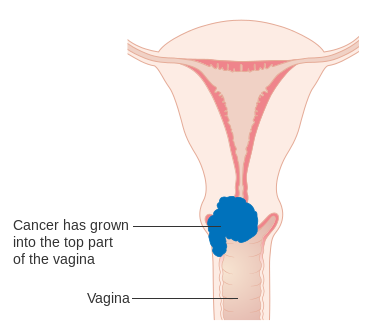
The cancer will spread into the top of the vagina if it is not treated and put into remission it will reach the vagina.
- Stage 2A1 the cancer is less than 4 cm.
- Sstage 2A2 the cancer is more than 4cm.
- Most of the time can be treated with surgery or chemoradiation.
Stage 2B
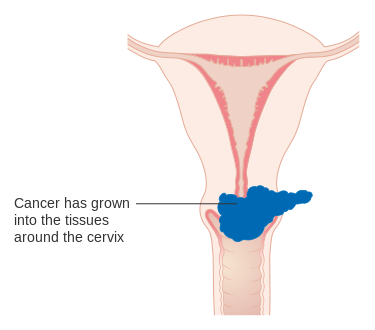
- The cancerous cells have reached the tissues around the cervix.
- Can be treated with chemoradiation, which increases the survival rates.
3. Stage 3
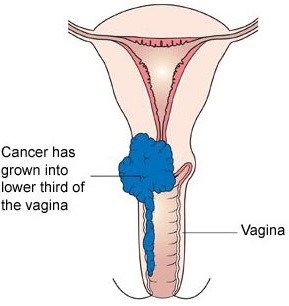
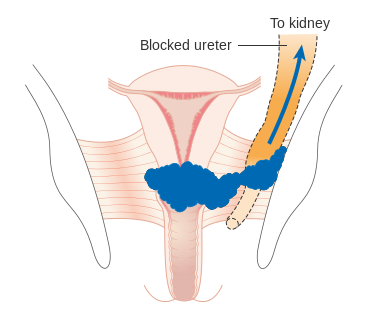
When cervical cancer spread into the pelvic area and into the lower part of the vagina, including the muscles and ligaments, it becomes stage 3 cervical cancer. At this point, you may find that the cancer blocks the tubes that drain the kidneys.
Again, this stage is divided into two sub-stages: stage 3A and stage 3B.
- Stage 3A has reached the lower third of the vagina, including the muscles and ligaments.
- Stage 3B has spread to the pelvic wall or blocks the uterus.
4. Stage 4
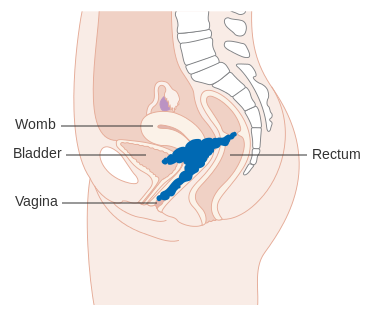
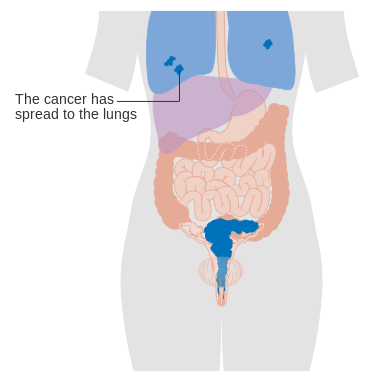
This is the most advanced stage of cervical cancer. At this point it has begun to spread into your other organs.
- Stage 4A is diagnosed when the cancer reached nearby organs.
- Stage 4B is diagnosed when the cancer reaches organs which are further away.
- Stage 4 cancer can be treated with surgery, radiotherapy, or chemotherapy.
Stage 3 Cervical Cancer Diagnosis
Tests to confirm diagnosis
- Colposcopy identifies abnormal or changed cells.
- Biopsy, tissue is removed and sent to be examined under a microscope.
- LLETA, tissue is removed by using a loop of wire carrying an electrical current. Sometimes all abnormal cells are removed with this method.
- Cone Biopsy determines how deep the cancer cells have spread below the cervix surface. This method may also be used to treat small cancerous growths.
To determine the stage
- Blood Samples checks your general health
- Chest x-rays check the health of your lungs.
- Computerized Tomography Scan is a type of x-ray that takes images of the inside of your body.
- Magnetic resonance imaging scan, a strong magnet connected to a computer takes detailed images of the inside of your body.
- Positron emission tomography scan, an injection of a sugar solution and radioactive materials allows the doctor to view active cancer cells within your body
Stage 3 Cervical Cancer Treatments
The most recommended form of treatment for stage 3 cervical cancer is a combination of radiation therapy and chemo. The chemo can either be completed using cisplatin or cisplatin plus fluorouracil. The radiation therapy will be a combination of external radiation beam and brachytherapy.
Cancer that has spread to the lymph nodes is a good indication that it has spread to other parts of the body as well. Many medical professionals recommend checking the lymph nodes before treatment starts. Their size will determine which test will work best for determining the stage of the cancer.
Radiation Therapy
This type of treatment uses radiation and high energy x-rays to destroy the cancer cells. There are three varieties of radiation therapy.
- External radiation therapy sends radiation to the cancer cells by using a machine outside of the body.
- Internal radiation therapy uses needles, seeds, wires, or catheters to send a radioactive substance directly to the cancer cells.
- Intensity-Modulated radiation therapy is done using a computer to create three dimensional images of the tumor that shows its size and shape. Then different strengths, depending on the size and shape, of radiation are sent directly into the tumor. This type of therapy actually causes the least amount of damage to the surrounding, healthy tissues.
Chemotherapy
This type of treatment uses drugs to intervene with the growth of cancer cells. Chemotherapy can be done orally or through an injection. When chemotherapy is done directly through the cerebrospinal fluid, organ, or abdomen, it will affect the cells within that specific area.
Stage 3 Cervical Cancer Survival Rate
40% of women diagnosed with stage 3 cervical cancer have a survival rate of 5+ years. Those in other stages of cervical cancers have different survival rates.
- Stage 1 cervical cancer patients have 95% survival rate of 5+ years. The sub-stage and size of the cancer growth will impact the survival chance.
- Stage 2 cervical cancer patients have a 50% chance of surviving 5 or more years after diagnoses.
- Stage 4 cervical cancer patients have a 5% survival rate. Stage 4 is the most severe and deadly stage of cervical cancer.
